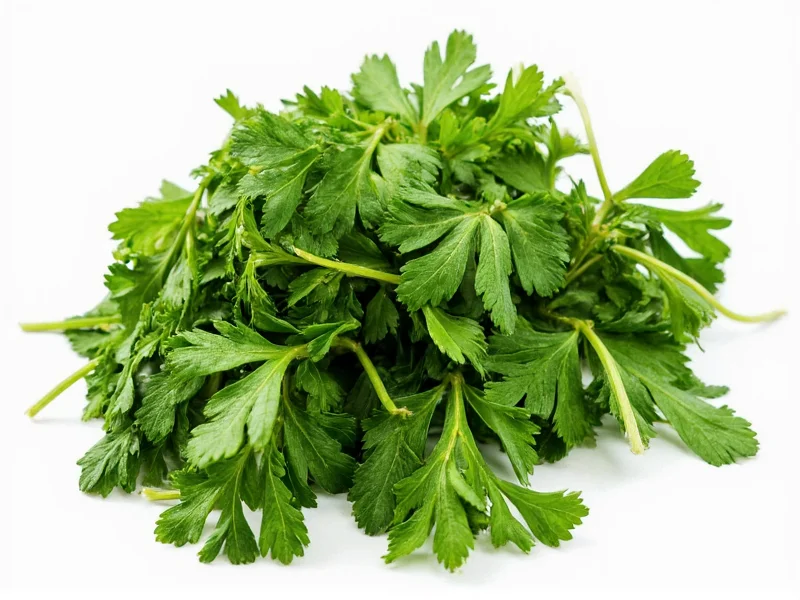When you're in the middle of cooking and realize you've run out of dried parsley, knowing reliable parsley substitute dried options can save your recipe. Dried parsley has a mild, slightly peppery flavor that's more subtle than fresh parsley, making substitution a thoughtful process rather than a simple 1:1 swap. The right dried herb substitute depends on your specific recipe, regional cuisine, and flavor profile requirements.
Understanding Dried Parsley's Culinary Role
Dried parsley serves primarily as a finishing herb in many dishes, adding subtle earthiness without overwhelming other flavors. Unlike fresh parsley which has bright, grassy notes, the drying process concentrates certain compounds while diminishing others, resulting in a more muted but still distinctive flavor. This transformation affects how suitable various substitutes will be for your specific cooking needs.
Top 8 Dried Parsley Substitutes Ranked by Flavor Match
| Substitute | Substitution Ratio | Best For | Flavor Difference |
|---|---|---|---|
| Dried cilantro | 1:1 | Mexican, Asian, and Latin American dishes | Slightly citrusy, more pronounced flavor |
| Dried dill | 3:4 | Fish, potatoes, egg dishes, salads | Grassy, anise-like notes |
| Oregano | 1:2 | Tomato sauces, pizza, Mediterranean dishes | Stronger, more pungent, earthier |
| Basil | 1:2 | Pasta sauces, soups, stews | Sweeter, more floral notes |
| Celery leaves (dried) | 1:1 | Stocks, soups, casseroles | Milder, more vegetal flavor |
| Chervil (dried) | 1:1 | French cuisine, delicate sauces | Subtle anise notes, more delicate |
| Tarragon (dried) | 1:3 | Chicken, fish, vinegar-based dressings | Distinct licorice flavor, use sparingly |
| Italian seasoning blend | 1:2 | General Mediterranean recipes | Complex herb mixture, less parsley-specific |
When to Choose Each Parsley Substitute Dried Option
Dried Cilantro: The Closest Flavor Match
For recipes where parsley plays a supporting but noticeable role, dried cilantro provides the most similar flavor profile to dried parsley. This makes it an excellent dried parsley substitute for soups, stews, and casseroles. When using dried cilantro as a parsley substitute dried option, maintain the same measurement as your recipe specifies for parsley, but add it slightly later in the cooking process since dried cilantro has a more pronounced flavor.
Oregano: Best for Mediterranean Dishes
When preparing tomato-based sauces, pizza, or Greek dishes, oregano serves as a practical dried parsley alternative. Use half the amount of oregano compared to what the recipe calls for parsley, as oregano has a stronger, more pungent flavor. This substitution works particularly well in recipes where parsley is used primarily for its visual appeal rather than distinctive flavor.
Dill: Ideal for Seafood and Potatoes
Dried dill makes an excellent parsley substitute dried option for fish dishes, potato salads, and egg preparations. Since dill has a more distinctive flavor than parsley, use about three-quarters of the amount specified for parsley. The subtle anise notes in dill complement many dishes that would typically use parsley, especially in Scandinavian and Eastern European cuisine.
Creating Your Own Custom Dried Parsley Substitute Blend
For the most versatile dried parsley alternative, create a custom blend using equal parts dried cilantro, dried chervil, and dried celery leaves. This combination captures the mild earthiness of dried parsley while providing balanced flavor notes that work across multiple cuisines. Store your custom blend in an airtight container away from light and heat for up to six months.
Common Mistakes When Using Dried Parsley Substitutes
Many home cooks make critical errors when substituting dried parsley that can compromise their dishes. The most frequent mistake is using fresh herbs as a direct substitute for dried parsley without adjusting quantities—remember that fresh herbs are generally three times less potent than dried versions. Another common error involves substituting strongly flavored herbs like rosemary or thyme in equal amounts, which can overwhelm delicate dishes. Always start with less substitute than you think you need, then adjust to taste after the dish has cooked for at least 15 minutes.
Storage Tips for Dried Herb Substitutes
Proper storage significantly extends the shelf life and maintains the potency of your dried herb substitutes. Keep all dried herbs in airtight containers away from direct sunlight, heat sources, and moisture. The pantry typically provides ideal conditions, while refrigeration can cause moisture buildup that degrades quality. Label each container with the purchase date and replace dried herbs every 6-12 months for optimal flavor. When testing older dried herbs, rub a small amount between your fingers—if the aroma is weak, it's time to replace them.
Special Considerations for Specific Cuisines
Different culinary traditions require thoughtful herb substitution approaches. In Italian cooking, where dried parsley often appears in tomato sauces and meat dishes, a combination of oregano and basil creates the most authentic flavor profile. For French cuisine, where parsley frequently appears in fines herbes blends, dried chervil with a touch of tarragon works best. In Middle Eastern dishes, dried mint combined with a small amount of dried dill provides the closest approximation to dried parsley's role in traditional recipes.











 浙公网安备
33010002000092号
浙公网安备
33010002000092号 浙B2-20120091-4
浙B2-20120091-4